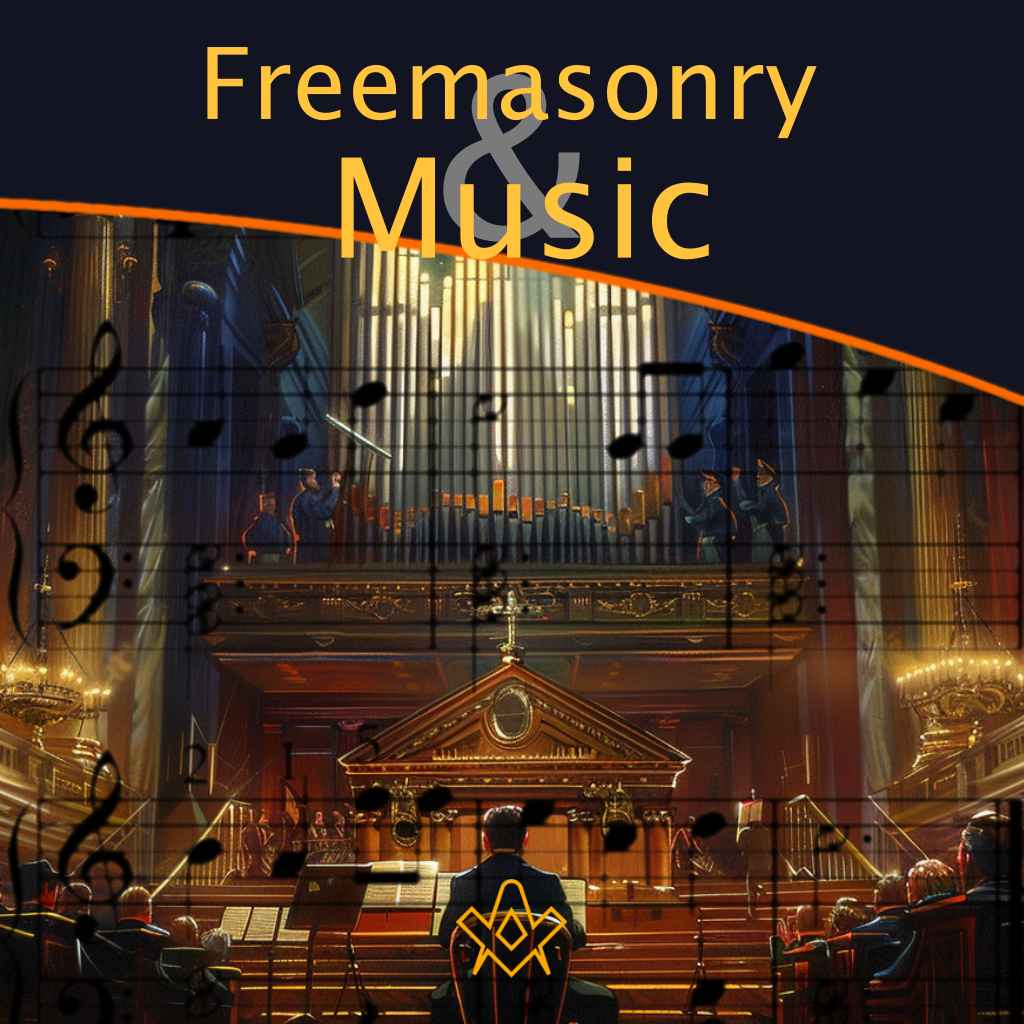Discover the transcendent power of music through the eyes of John Philip Sousa. In a world where beauty intertwines with divine inspiration, music becomes a celestial language.
“There is only one way of judging music and that is either by its beauty or its lack of beauty.
In the olden days men were very much impressed with the beauty of melodic design and worked for the success of music according to their idea of melody and their harmonic knowledge.
Most of the composers of today go in for colour and, if they get a lot of colour they feel satisfied and let it go at that.
It is my belief that a man or a woman cannot write melodic music without an inspiration from something above themselves – that might make your atheist laugh, but I believe that the compositions of today are written by men who write them without inspiration and write entirely from their knowledge of harmonic structure and thus produce music that is lacking in the quality of inspiration”
– John Philip Sousa, 1930 [1]
Freemasonry and music have been staples of the Craft for centuries. [2]
Historically, musicians have been drawn to freemasonry. From Motzart to Duke Ellington, freemasons have been at the forefront of each major shift in the history of music.
In the eighteenth century, JC Bach and other European musicians and painters were drawn to London when the Lodge of the Nine Muses was founded.
The lodge provided a chance for musicians and artists to network with potential employers and meet other artists if they had recently moved to a new city. [2-4]
Within the Craft, music has served to be played in masonic lodges: music composed for masonic rites and occasions, and lodge songs performed to keyboard accompaniment before, after, or during meetings.
Freemasons were regular patrons of the London theater; their songs were a staple of the shows. Every year, masons rode and marched in their hundreds through the streets of London, backed by a marching band. [2-4]
Beyond the Craft, music has long been a fundamental component of human expression reflecting profound cultural, technological, and social changes in society. Like any art form, it has the potential to reflect deep seated ideas within society that transcend physical and social barriers.
However, for most people, music provides moments of reflection, escapism, and community. Yet for masons, as the composure Phillip Sousa emphasized, music represented a central part of their faith and practice.
Within the teachings of freemasonry, the seven liberal arts and sciences are as listed: grammar, logic, rhetoric, arithmetic, astronomy, music, and geometry.
For Freemasons,
“music teaches the art of forming concords, so as to compose delightful harmony, by a proportional arrangement of acute, grave and mixed sounds. This art, by a series of experiments, is reduced to a science, with respect to tones, and the intervals of sound only”. [5]
In this definition, the science and art of music are linked together in perfect harmony. As John Phillip Sousa emphasized, the key quality of the science and art of music is whether it has beauty.
Yet, to what do we reference beauty to? What standard do we use? According to Sousa, there is a divine element to music that pulls a person beyond themselves to the celestial realm. In other words, music that is beautiful is one that resonates with a person’s heart, mind, and soul with their creator to produce that which is divinely inspired.
I believe that this observation teaches us important spiritual lessons about our relationship with God. With music, we can see our bodies and souls being the instruments by which God creates music in what we call the journey of life.
We, in mental and physical form, are the tools and manner by which God interacts with creation and has his being swell with pride with what is created. In turn, we are given the keys to God’s heart with the music we create in all its shapes and forms.
But as Sousa wrote, this beauty requires being inspired. How do we do this as masons? As we are taught early on in our masonic journey, the holy scriptures of our religious traditions are the foundation for our masonic practice. If we never read his word, how are we to connect with the divine? From this reading, we can draw inspiration and ideas to our prayers as we speak with our creator.
Rather than rambling, we can learn to pause and listen in silence during our conversations with God to hear his voice. As Ben Johnson wrote, “The music is not in the notes, but in the silence between”. [6]
Furthermore, how often do we sing to our creator or play music in our private worship? Certainly, these practices of reading scripture, pausing with our prayers, and signing with unabashed reverence to God can open opportunities for divine inspiration to create music in our life, whether that is actual music or through our various professions.
As a physician, the practice of scripture, listening in prayer, and music opens my mind to be receptive to God’s movements in my practice and patient’s life.
This can manifest as openings to which I can be receptive to God moving to address the underlying problem of a patient beyond their physical needs. Or, in turn, it can be observing God’s blessing in a comment or impact a small act of mine had in a patient’s life. Both cycles are the “music” we speak of in masonry.
A dance of harmony between ourselves and our creator. Both receiving and producing music to create the eternal temple of above.
For we are all composures of the music in our lives. And, as John Philip Sousa wrote;
“I do not, of course, manufacture my themes deliberately; the process isn’t direct or arbitrary enough for that. It is not a nonchalant morning’s work. I often dig for my themes. I practice a sort of self-hypnotism, by penetrating the inner chambers of my brain and receiving the themes. Any composer who is gloriously conscious that he is a composer must believe that he receives his inspiration from a source higher than himself. That is part of my life credo. Sincere composers believe in God”. [7]

John Philip Sousa
John Philip Sousa, an iconic figure in American music, heralded for his stirring military marches, carved a niche for himself as “The March King.” Born in 1854 in Washington, D.C., Sousa’s early life was steeped in music, influenced heavily by his father, a Marine Band trombonist.
His undeniable talent blossomed as he mastered the violin under the guidance of George Felix Benkert, post a brief, tumultuous stint with John Esputa Jr. The pivotal moment came when his father enlisted him in the United States Marine Band to deter his young son from joining a circus band, setting the stage for a remarkable career that would see Sousa ascend to the directorship of the Marine Band.
During his tenure, Sousa elevated the band’s prestige, serving under five presidents. His creative genius birthed marches such as “The Stars and Stripes Forever” and “Semper Fidelis,” anthems that resonate with American pride to this day. Sousa’s own band, formed post his time with the Marine Band, embarked on global tours, endearing him to audiences worldwide.
Later, his patriotic fervor found expression in World War I service, even as he composed prolifically. Sousa’s legacy, encapsulated in timeless marches and military service, continues to inspire, embodying the spirit of American patriotism and musical excellence.
[Edited Source – Wikipedia ]
Footnotes
Reference
Citations
1. Sousa JP. John P. Sousa to John W. Hughes, March 12, 1039. The Gilder Lehrman Institute of American History 1930.
2. Nettl P, Baker T. Freemasons’ Music in the Eighteenth Century. The Musical Quarterly 1930;16(2):191-198.
3. McVeigh S. Freemasonry and Musical Life in London in the Late Eighteenth Century. In. Music in Eighteenth-Century Britain: Routledge; 2017:72-100.
4. Pink A. A music club for freemasons: Philo-musicae et -architecturae societas Apollini, London, 1725–1727. Early Music 2010;38(4):523-536.
5. Texas GLo. Monitor of the Lodge – Monitorial Instructions in the Three Degrees of Symbolic Masonry Lodge Procedures, Lodge Ceremonies, and Grand Lodge Ceremonies Waco, Texas: Grand Lodge of Texas; 2023.
6. Notes to Cynthia’s Revels. In: Gifford W, ed. The Works of Ben Jonson: With Notes Critical and Explanatory, and a Biographical Memoir London, United Kingdom: Bickers and Son, Henry Sotheran and Co.; 1875.
7. Sousa JP. Marching Along. Hale, Cushman & Flint; 1928.
Article by: Jonathan Kopel

Bro. Jonathan Kopel is a master mason from Lubbock Lodge #1392 who resides in DC for his neurology residency.
.
Recent Articles: Masonic Art series
 Experience the power of Masonic art like never before with our handpicked selection of NFT collections now available on Opensea. Discover stunning works of art from talented artists across the world, all inspired by the ancient traditions and symbols of the Freemasonry. Don't miss out on the chance to own a piece of history - start exploring our Masonic art NFT projects today! |
 Digital Freemasonry NFT Marketplace Unlock the digital realm of Freemasonry with our exclusive NFT marketplace, designed for the modern-day Masonic community. Become one of 333 founders of Digital Freemasonry and gain access to a range of cutting-edge digital tools for the craft. Own a unique NFT as confirmation of your contribution to this ground-breaking initiative. Join us in shaping the future of Freemasonry - start exploring our NFT marketplace now! |
 Experience the legacy of Tubal Cain like never before with our unique collection of Masonic apron NFTs. Each of the 1,000 digital designs are one-of-a-kind and serve as a symbol of Masonic pride and tradition. And for those who prefer to have a physical item, these designs are also available as collectible aprons. Don't miss out on this rare opportunity to own a piece of Masonic history - start exploring our Tubal Cain Masonic apron NFTs now! |
 Discover the transcendent power of music through the eyes of John Philip Sousa. In a world where beauty intertwines with divine inspiration, music becomes a celestial language. Sousa's belief in melodies born from higher realms challenges us to seek the profound, divine connection in our creative expressions. Let music elevate your soul. |
 In a world brimming with wonder, pain, and confusion, the concept of love transcends all boundaries. In this thought-provoking poem, the poet dives into the depths of existence, questioning the nature of love, its transformative power, and the eternal quest to understand its true essence. Prepare to explore the enigma of love, as this poem delves into its many dimensions. |
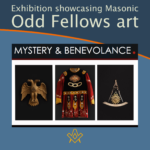 Exhibition showcasing Masonic, Odd Fellows art Art and education in the Hoyt’s newest exhibition, "Mystery & Benevolence: Masonic and Odd Fellows Art", explores the art and accessories of two fraternal organizations steeped in symbols and coded systems, from special handles, gestures and passwords to ritualized performances that probably come from the Middle Ages. |
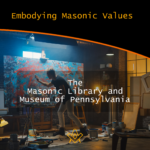 Since 2018, The Masonic Library and Museum of Pennsylvania’s “Embodying Masonic Values” open art competition has provided an opportunity for participants to explore Masonic values through art. Cash prizes are awarded to winners in five categories: Oil, Three-dimensional, Drawing and Print-making, Water-Based Medium and Digital Imagery. Most artwork is also available for sale. |
 Freemasonry in Popular Culture P4 - TV Part 4 of our series on Freemasonry in Popular Culture takes a look at some of the TV series that feature Freemasonry. With much intrigue into the supposed machinations of the Freemasons within business, politics and the police force, TV was a ripe medium for ridicule and sensationalist anti-Masonic propaganda. |
 Freemasonry in Popular Culture P3 - Comic Books and Graphic Novels Part 3 of our series on Freemasonry in Popular Culture takes a look at some of the comic books and graphic novels that feature Freemasonry. |
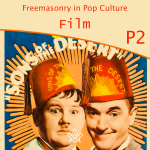 Freemasonry in Popular Culture P2 - Film Following on from Part 1 of Freemasonry in Pop Culture we take a look at Masonic depictions in film. |
 Freemasonry-membership is a mysterious NFT project that would be built across the Metaverse. Taking the idea from virtual lodges, the project is a huge mystery in terms of assets and value for the user. |
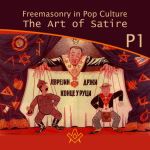 Freemasonry in Popular Culture P1 - The Art of Satire Freemasonry has been the subject of satire and lampooning since its inception in the 1700s courtesy |
 First Three Degrees of Freemasonry by Grant Wood For many of us, the name of the artist Grant Wood doesn’t ring any bells. But on a recent visit to the Grand Lodge of Iowa Masonic Library and Museums, I discovered a hidden gem – Grant Wood's vision of 'The First Three Degrees of Freemasonry'. |
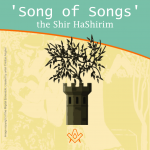 'Song of Songs' - the Shir HaShirim Freemason, composer and artistic director Laurențiu Ganea announces the premiere of his long-awaited composition of the 'Song of Songs' - the Shir HaShirim (also known as the 'Song of Solomon'). |
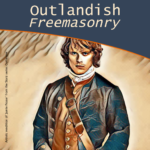 Martin Bogardus explores the Masonic characters and symbolism within the hugely successful 'Outlander' books and TV series. |
 The Masonic Art of Ari Roussimoff The Art, Masonic Aprons, and Magic of Ari Roussimoff - interviewed by Elena Llamas |
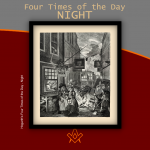 Hogarth's mockery of Freemasonry. A humorous depictions of life in the streets of London, the vagaries of fashion, and the interactions between the rich and poor. |
 This entertaining and infectious poem was written by an Ayeshire poet |
masonic knowledge
to be a better citizen of the world
share the square with two brothers

click image to open email app on mobile device
